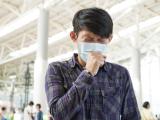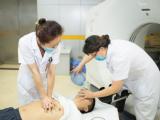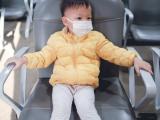May 9, 2003 (CIDRAP News) – Just five "super spreaders" infected most of the people who contracted SARS in Singapore, but most of those infected did not spread the disease to anyone else, according to the Centers for Disease Control and Prevention (CDC).
The five super spreaders, or highly infectious people, infected 144 others, the CDC reports in today's issue of Morbidity and Mortality Weekly Report. Singapore has had 204 cases of SARS (severe acute respiratory syndrome), according to the World Health Organization (WHO).
The other side of the epidemiologic coin in Singapore "is that 81% of the people with SARS in Singapore did not infect anyone else," CDC Director Julie Gerberding, MD, said in a news briefing yesterday. "So most people don't transmit the infection." Why some people are so much more infectious than others is unknown, she added.
Many of the cases linked to the five super spreaders originated in hospitals, the MMWR report says. The five super spreaders were not rapidly identified as SARS patients; some of them became ill very early in the outbreak, while others had unusual clinical presentations or had no initial history of direct contact with another SARS patient.
Super spreaders have been described for other diseases, including rubella, layrngeal tuberculosis, and Ebola fever, the CDC said.
The global cumulative case count for SARS today reached 7,183, with 514 deaths, after topping 7,000 cases and 500 deaths yesterday, according to the WHO. China reported 118 probable new cases and 6 deaths today, bringing the cumulative total to 4,805 cases and 230 deaths. Beijing, in a sign that its outbreak is slowing, reported 48 new cases and 2 deaths today; a week ago, on May 2, the city had 96 new cases.
Yesterday the WHO warned against nonessential travel to Taipei, Taiwan, and the mainland Chinese provinces of Tianjin and Inner Mongolia because of the extent of the SARS outbreaks there. Taiwan reported 18 new cases today, for a cumulative total of 149. WHO travel advisories also remain in effect for Beijing, Hong Kong, Guangdong, and Shanxi.
In other SARS developments, Gerberding announced yesterday that the CDC is making one of its new diagnostic tests available to state and local public health laboratories. The agency will provide the reagent for the ELISA (enzyme-linked immunosorbent assay) test, which can detect antibodies to the SARS coronavirus 21 days after illness onset. A positive test at that stage is "a very strong sign" of SARS, Gerberding said. A negative test doesn't necessarily exclude the disease, but it makes it less likely.
Today, a group from Singapore published in The Lancet a study in which they sequenced the genomes of SARS coronavirus isolates from five cases in Singapore and compared them with the genomes of isolates from Toronto, Hong Kong, Hanoi, Guangzhou (China), and Beijing. They identified two distinct genotypes, suggesting that virus groups associated with contact sources and geography are emerging. "These signatures can be used to trace sources of infection," the investigators state.
Despite the differences the researchers found in the various isolates, the overall findings suggest that the virus "is maintaining its consensus genotype and is thus well adapted to the human host," write Earl G. Brown and Jason A. Tetro of the University of Ottawa, in a commentary accompanying the report from Singapore. On one hand, they say this suggests that the virus "is not likely to change rapidly and thus may not readily mutate to a benign infection." On the other hand, the apparent genetic stability of the virus bodes well for the development of an effective vaccine, according to Brown and Tetro.
See also:
WHO SARS site
http://www.who.int/csr/sars/en/
Transcript of CDC's May 8 news briefing
http://www.cdc.gov/media/transcripts/t030508.htm
MMWR report on Singapore cases
http://www.cdc.gov/mmwr/preview/mmwrhtml/mm5218a1.htm
Lancet report on genetic comparison of 14 SARS virus isolates
http://image.thelancet.com/extras/03art4454web.pdf
Lancet commentary
http://image.thelancet.com/extras/03cmt124web.pdf

















